2014 BMW i3 Electric Car
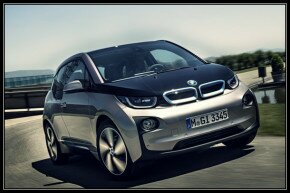 |
The 2014 BMW i3 is the first all-electric vehicle of the German manufacturer and the first member of its “i” sub-brand of green cars, that features some of most advanced technologies to date. It make its debut in London, New York and Beijing at the same time.
The average daily driving distance of i3 is around 80 to 100 miles (about 129 to 161 km). If ECO MODE is activated, it can add an extra 12% on top of that. Unlike other automakers, who have kept models strictly electric or strictly hybrid, in addition to the all-electric version, BMW offers optional 34-hp 650cc range-extending two-cylinder engine, that can transform the car into a Volt-like series hybrid. That engine will not power the wheels but will serve strictly as a back-up power reserve, adding range and versatility, which is good in my opinion.
BMW says that the range extender, which has a fuel capacity of 2.4 gal, roughly doubles the car’s range, which still falls well short of a traditional gasoline car. More important than outright range, however, is the fact that, with the range extender, drivers can refuel at gas stations rather than having to find an electrical charge station. Gas stations are far more readily available than charge stations and also provide quicker refueling.

The i3′s basic powertrain specs remain much the same as when BMW introduced the last i3 concept at the LA Auto Show last year. The 170-hp electric motor, which twists out up to 184 lb-ft of torque, receives its power from a 22-kWh, liquid-cooled lithium-ion battery. Thanks to the optional SAE DC Combo Fast Charging hardware, that battery can fill to 100 percent in about 30 minutes. The 220-volt Level 2 J1772 charger, meanwhile, takes care of business in about 3 hours. The motor works in concert with a single-speed transmission to send power to the rear wheels.
The i3 can’t compete with the upcoming i8 when it comes to speed, but it will offer drivers ample pep for daily commuting. It can accelerate to 30 mph (48 km/h) in 3.5 seconds and 60 mph (96.5 km/h) in about double that time. The car’s top speed is 93 mph (150 km/h), which is electronically limited to conserve electricity.
The i3 uses regenerative braking to help keep the battery running as long as possible. The regeneration is speed sensitive, employing braking at lower speeds and coasting at higher speeds. As BMW tells it: “Rather than switching straight to energy regeneration when the driver eases off the accelerator, the electric motor uses zero torque control to separate from the drivetrain and deploy only the available kinetic energy for propulsion. In this mode, the BMW i3 cruises using virtually no energy at all.”

The powertrain may be the technological highlight of any EV, but electric cars also tend to have a lot of other technologies at work, pulling the most range and efficiency possible out of that powertrain. The i3 sets a new standard in this regard. According to BMW it uses the first mass-produced carbon fiber-reinforced plastic (CFRP) passenger cell build in the auto industry. BMW has committed to bringing carbon fiber, more common in supercars like the Lamborghini Aventador, into the mainstream, and the i3 is one of the first models that makes good on the promise.
The CFRP is used in the construction of what BMW terms the “Life Module” (i.e. the cabin area), helping to slim the i3 down to roughly 2,700 lb. That weight is distributed at a near-perfect 50:50 ratio. The “Drive Module” (i.e. chassis) is made of all aluminum, and other lightweight materials like a magnesium instrument panel cross-member add to the weight savings.
In addition to its light weight, BMW says that the CFRP Life Module, combined with crash-activated front and rear aluminum structures, offers ample safety and protection. The company coordinated with international crash test agencies to thoroughly test the integrity of the design and reports that CFRP’s rigidity and high impact absorption allow it to maintain form and protect occupants well. The battery is positioned in the underbody of the car, where it is least likely to be affected by the impact of a crash.

The debut i3 is in the form of the four-door, as opposed to the Concept Coupe from LA. When compared to the original i3 concept, it loses the extreme glass doors, but maintains the expanded rear side window of the Concept Coupe. The rear-hinged rear coach doors create an open, B pillar-less entry into the car. Other exterior design features of interest include U-shaped LED head and tail lamps, contrasting black surfaces, a large rear windshield, and aerodynamic air curtains.
BMW designed the i3 as a city car through and through, using short front and rear overhangs to improve maneuvering in tight driving and parking spaces. The car has a turning radius of 32.3 feet (9.8 m), helping it to remain nimble around cramped city centers. Thanks to the elimination of the typical transmission tunnel, the open interior offers a “Slide Through Experience,” allowing the driver to easily slide over and jump out the passenger door to avoid exiting onto a busy street, or perhaps when the space is too tight to open the driver-side door.

The 2014 BMW i3′s interior separate itself from the average car. In addition to the Slide Through Experience, the loss of the transmission tunnel increases space and creates a more open feel, which is further promoted with front and rear bench seats. A clean, functional dashboard keeps the driver focused on his mission of navigating from point A to B. The freestanding steering column houses all of the controls he’ll need to push forward, including the instrument cluster, start/stop button and gear shift selector.
BMW reminds driver and passengers they’re in the most eco-friendly of rides using a portfolio of available sustainable materials it calls “Next Premium.” The sustainable eucalyptus wood trim showed in the concept stages carries over to production, as does the olive leaf-tanned leather. Parts of the instrument panel and door panels are made from natural fibers procured from southern Asia’s Kenaf plant.
Navigation and infotainment is handled by a SIM card-powered BMW ConnectedDrive system tailored specifically to electric driving. BMW i Navigation delivers a real-world driving range estimate and mapping visualization, taking factors like elevation and distance into account. The system also provides information about nearby charging stations.

On the road, the driver has access to a ConnectedDrive agent at all times of the day. The agent can provide information about things like charging stations and points of interest. BMW’s Intelligent eCall provides emergency assistance, sending information about the location, number of front-seat occupants, and crash severity to the BMW ConnectedDrive Call Center, which notifies the appropriate 911 dispatch.
This electric vehicle also leverages the latest mobile technology to enhance functionality both in and out of the car. An Apple cable connects iPhone owners with apps and phone features. The BMW i Remote smartphone app offers functions like battery monitoring, car location, and door locking and unlocking.
The 2014 BMW i3 will launch in Europe in November and in the United States in the second quarter of 2014. It will be available in three trim levels – Mega World, Giga World and Tera World – starting at US$41,350, before any federal or state tax credits or BMW’s destination and handling fee. All three trim levels include the ConnectedDrive system, Intelligent eCall, i Remote app, trim-specific 19-inch wheels, a 7.4 kW onboard charger and LED headlights. The main differences are in interior materials and equipment. The Range Extender i3 model will start at $45,200, before destination and handling fee or tax incentives.






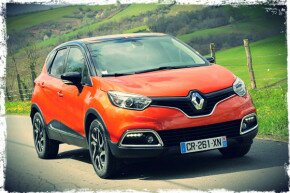


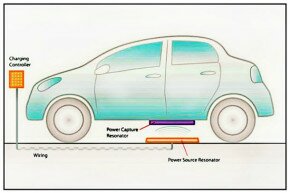

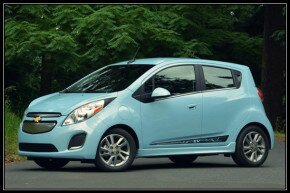
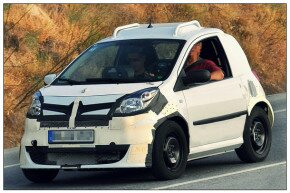


Leave a Reply